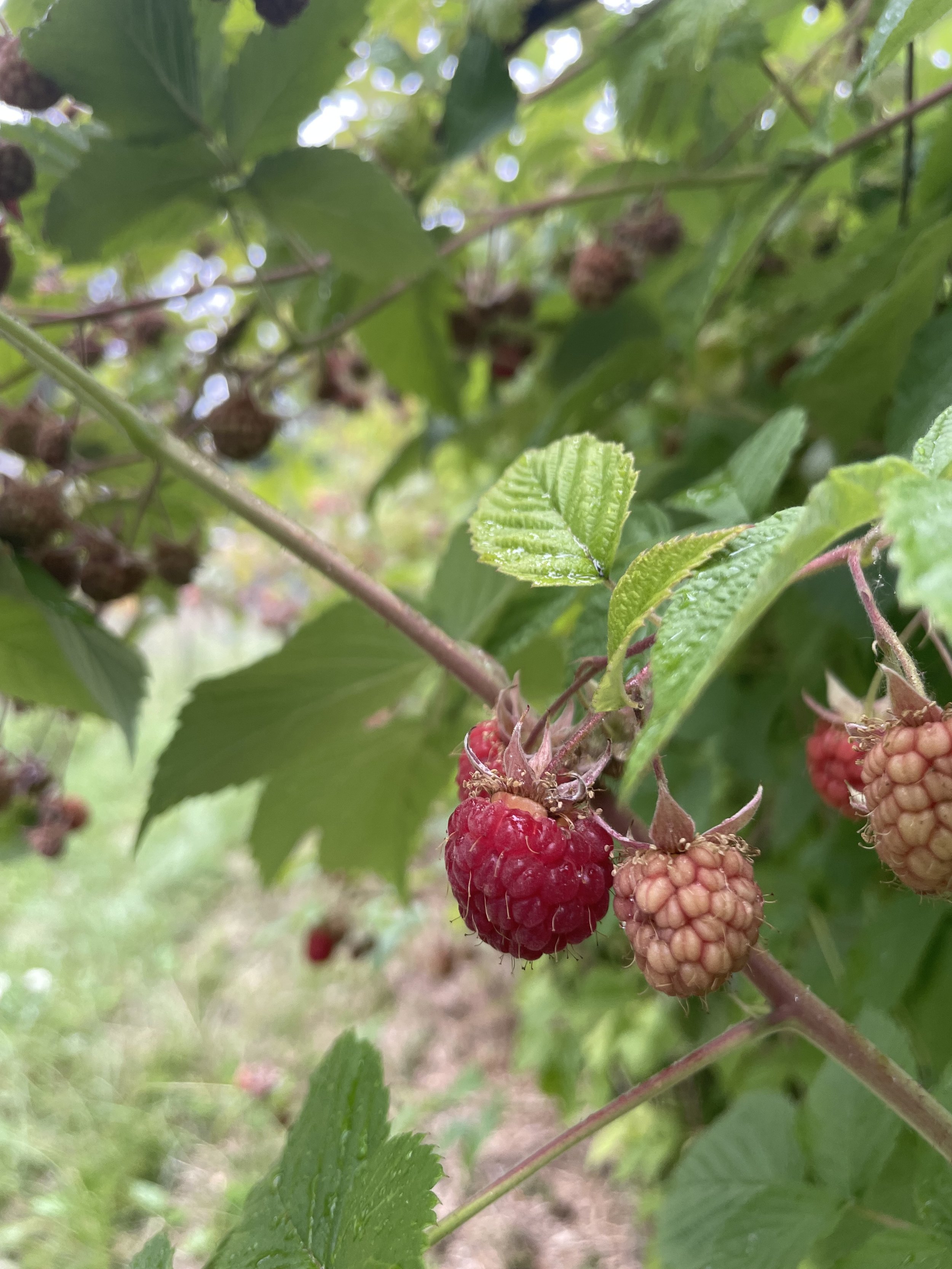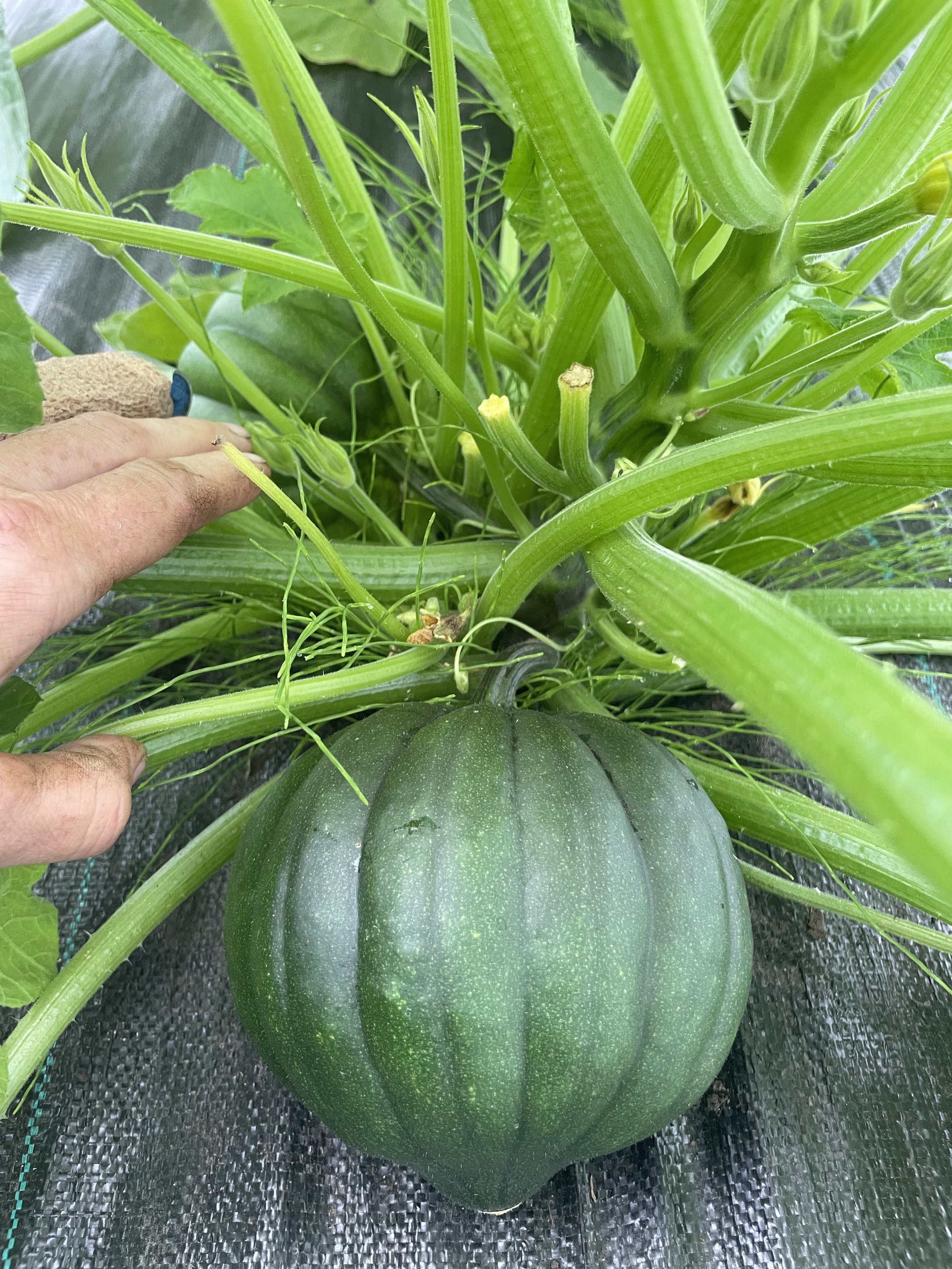July Weather Extremes Prove Challenging for Garden Crops
Summer cabbages. Photos by Tenley Nelson
Tenley Nelson - CRR Staff
This past month has been full of extremes. I have had temperatures from highs in the 80s to lows in the 40s and weather from blazing sun to pouring rain. Many crops have struggled in my garden through the early July heat. Even though they were well watered and in the shade, all the greens for restaurant sales in August bolted in the seed-starting trays. Some varieties of broccoli threw up tiny button heads. Cucumbers stopped setting fruit in the greenhouse. Certain beet and chard plants gave up on making leaves and tried to go to seed.
When the rains started, the air smelled stale at first as the moisture pounded onto the parched soil. The clouds lingered for nearly two weeks after the first heavy rain on July 11 and after a while it started to feel like we would never see the sun again. Even though we had several wonderful rains that felt like they soaked deeply into the earth, as soon as they stopped, the soil quickly dried out again. Without supplemental irrigation, my perennial berry bushes have struggled this season. So too have the willows and poplars which are turning yellow early this year, my guess, from lack of moisture.
I am a big fan of using mulch in the garden though it can be hard for me to find. This year I have access to herbicide-free hay, so I am using that. (Persistent herbicide residue from mulch or manure will ruin your garden. Always remember to ask if a product is herbicide free.) But mulch encourages slugs, so it is not a win-win situation even if it is wonderful to protect the soil, cool the roots, discourage evaporation, and reduce soil compaction from heavy rains.
Beets. Photo by Tenley Nelson
After such a dry season my hopeful gardener brain was thinking maybe all the slug eggs from last year desiccated and died. Alas my dreams were in vain. As soon as it rained, tiny slugs appeared. One more chore to add to the list: collect and kill slugs.
The weeds have yet again brought me to my emotional knees this month. Every year something new comes up in July that prevents me from keeping up with the weeding. (I truly need to start scheduling this in.) This year it was a small surgery in June that prevented me from bending easily for a few weeks.
I was nearly fully recovered from that challenge when I broke my finger. Or rather, my horse broke my finger when it got caught up in the rope. From typing on a keyboard to doing dishes to plucking weeds from the garden, having a splint on one finger makes every task just a touch more challenging.
Domestic raspberries are ripening up finally. Photo by Tenley Nelson
The weeds have been free range for a while now. The rains germinated all the willow and poplar fluff that settled on the beds in June. The lambsquarter is waist high, the horsetail is a thick mat, the bindweed is flowering, the strawberry spinach is prolific, and the willow herb started seeding last week while I was distracted during the mobilizing of my husband up north for the hunting season.
I miss the horses but am happy to cross training our pair of two-year-olds and yearling off my list. There is a lot of weeding to be done in the coming weeks to stop the weed seeding from continuing!
Much has been accomplished this month even if it sometimes does not feel like it. During the second week of July, I removed the silage tarps from the west side and seeded the 20 beds with a cover crop mix just before the rains began. It is an experiment to see if I can knock the horsetail back enough to use that side next year for the vegetable production and to provide some of my own soil fertility.
Jester lettuce. Photo by Tenley Nelson
At the very least, the horsetail did not spore this year. The cover crops are growing rapidly but I wonder if they will have time to reach the seed head emergence stage when I will crimp the plants and put the tarps back on. If I do not get the timing right, I might have a whole new set of “weeds” to battle next year.
The summer crisp lettuces handled the July heat with dignity and the kale and chard are producing. Cucumbers have been flowing out of the greenhouse and the tomatoes are ripening. The first ones were Ida gold, a midsize, and Sakura cherry. Many more are coming along.
The zucchini must be checked daily, and I have the most beautiful acorn squash coming along that I have ever grown. The green beans are ready for their first picking and herbs are ready to be cut for drying. The snap peas have just started producing and the early cabbages are mature this week.
Acorn squash. Photo by Tenley Nelson
I delayed my starts several weeks this spring because of the cold weather and a high snow year so crops are coming on later than usual. The cauliflower is just starting to set heads and baby brussels are forming on the stalks. I think I hit the timing right with most of the brassicas as they were still in leaf stage during the heat wave and look like they will produce well in a cooler August.
My potatoes were planted a month late and looking at them now I still have no idea if I will get anything out of the plants. But I am content with the new area getting worked and look forward to moving the greenhouse out of its temporary home in our driveway turnaround area and in place at the garden for 2023 spring greens.
Fall spinach was planted just below the potatoes and the little leaves are growing fast. They are not yet in a fenced area, so I am hoping our farm cat continues to protect them from hares and voles. More fencing and irrigation projects in my future.
From my garden to yours: Happy harvest season! May your gardens be far less weedy than mine and overflowing with gorgeous produce!
Garlic scapes. Photo by Tenley Nelson
More from Tenley Nelson:






